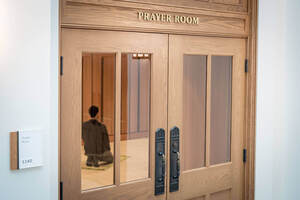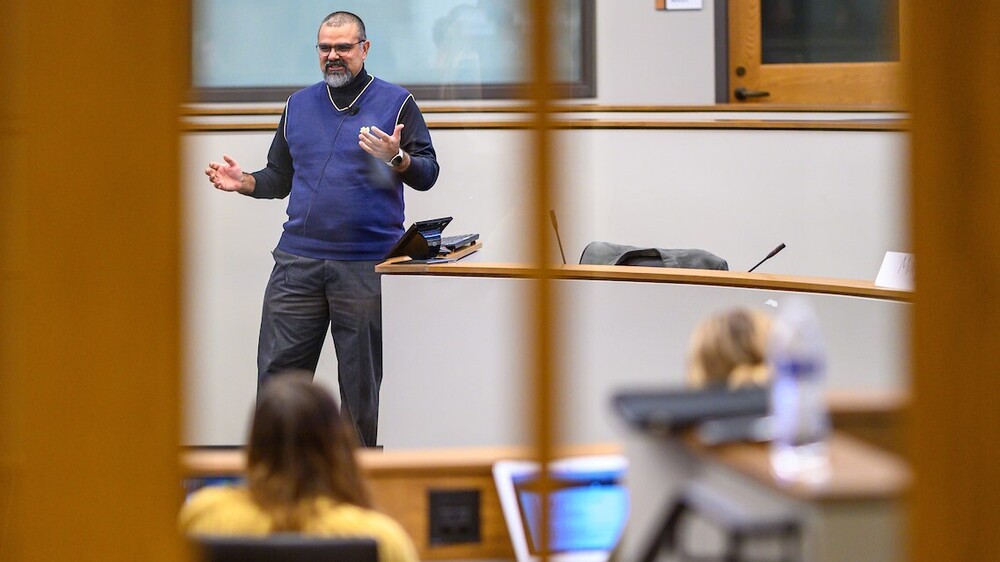As a Christian and a curious student of both Christian denominations and world religions, here’s something I didn’t know. I’m wondering if you’ll be surprised, as well.
Mary (yes, the mother of Jesus) is the only woman mentioned by name in the Quran, the sacred scripture of Islam. This time of year, I find myself yearning to know what it was like for a young woman to feel the presence of the Holy Spirit in such a tangible way. I also think about how we might recognize that same presence today, and now — after my conversation with Mahan Mirza, executive director of the Ansari Institute for Global Engagement with Religion — I wonder how this simple recognition of our deeply historical connection as people of faith could inspire us to learn more.
“Religion has something important to say in [the conversation] about world-making,” Mahan, also a teaching professor of Islamic studies, says. “Trying to think about what it means to be living in the world, at a time like this, from a place that’s deeper than just your mind. In Islamic tradition, you think with the heart. You’re guided by the very kinds of questions you ask.”
So, I asked him a question that guided my own journey to Notre Dame. How do you practice your faith here?
“You don’t have to try and you don’t have to hide,” he says. “That’s the important part of being here — you just be yourself.”
Isn’t that what we’d all hope for?

With that sentiment in mind, Mirza gives me a window into a key piece of his spiritual practice as a Muslim: five daily prayers. He uses the multi-faith prayer room inside Jenkins Nanovic Halls for three to four of those each day. It’s a simple room. You might even say bare, if you saw it in person, but that’s exactly the point. This room is poised to be whatever you need it to be.
Beginning with ritual purification (cleaning of the face, hands and feet) before progressing to prayers facing east (toward Mecca), Mahan shows me the mat he lays on the floor before kneeling — taken out of one of the cupboards that line the prayer room walls. In them is everything needed for his personal practice, as well as sacred texts and items for people of different faiths who might gather here.
“At other universities that are secular, you have to be very transactional, but here you can [ask yourself] how you relate this to what you believe, to your sense of purpose in life, and how does it conflict with your beliefs, how do you reconcile what you’re learning here with what you’ve brought with you. Those are incredible opportunities for us at an institution like this,” Mahan shares. “I feel at home in a faith-based institute. I feel like I can be myself here.”
I encourage you to read more about some of the other faith traditions practiced on campus, in a piece by Carrie Gates, with photography by Barbara Johnston.
